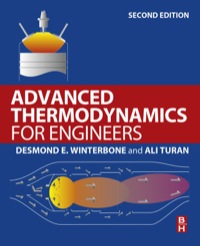A turbocharged, intercooled compression ignition engine is operated on octane (left(mathrm{C}_{8} mathrm{H}_{18} ight)) and achieves constant pressure
Question:
A turbocharged, intercooled compression ignition engine is operated on octane \(\left(\mathrm{C}_{8} \mathrm{H}_{18}\right)\) and achieves constant pressure combustion. The volumetric compression ratio of the engine is \(20: 1\) and the pressure and temperature at the start of compression are 1.5 bar and \(350 \mathrm{~K}\) respectively. If the air-fuel ratio is \(24: 1\), calculate maximum temperature and pressure achieved in the cycle, taking into account the dissociation of the carbon dioxide and water vapour. Assuming that the combustion gases do not change composition during the expansion stroke, calculate the indicated mean effective pressure (imep, \(\bar{p}_{i}\) ) of the cycle in bar. What has been the effect of dissociation on the power output of the engine? Assume that the index of compression, \(\kappa_{c}=1.4\), while that of expansion, \(\kappa_{e}=1.35\) (see Chapter 10, P10.7). [2487 K; 99.4 bar; \(15.10 \mathrm{bar}\) ]
Step by Step Answer:

Advanced Thermodynamics For Engineers
ISBN: 9780080999838
2nd Edition
Authors: D. E. Winterbone, Ali Turan





